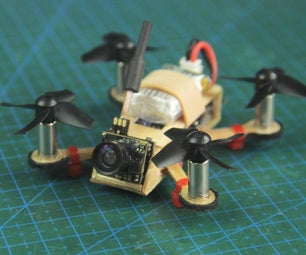Introduction: Cylon Lights
This project was designed by hittconsulting. I revised the design slightly to work on our new project boards. You can get the kit from Gadget Gangster and download a PDF version of this howto.
Here's a quick video of the original version;
Warm up your soldering iron and get started!
Step 1: Gather the Parts
Parts list
- Knob
- 1x .1 Ceramic cap
- 2x 10uF Electrolytic caps
- 1x 28 Pin Dip socket
- 1x Power connector
- 1x 1n4001 diode
- 1x SX 28 microcontroller (if you buy the kit, the SX will come pre-programmed, otherwise you can download the sourcecode from Gadget Gangster)
- 8x 3mm Red LED's
- 1x Gadget Gangster Boss Board
- 1x 3.3v LDO regulator
- 1x 10k ohm potentiometer
- 3x 10k resistors (Brown - Black - Orange)
Step 2: Resistors and Cap
Add 10k resistors (Brown - Black - Orange) at the following locations;
at [Px]
k13:p13
r13:o17
Add the axial capacitor from s13:t16. This capacitor isn't polarized, so it doesn't matter which way you insert it.
Step 3: DIP Socket
Add the DIP socket right over the middle of the board. Note that the notch points to the left. The first pin goes in the hole labeled 'SX' on the circuit board.
Step 4: Prepare the Voltage Regulator
Using your dikes or a pair of pliers, bend the pins of the regulator as shown in the photo. This will help make it easier to insert into the circuit board.
Step 5: Add the Voltage Regulator
The voltage regulator goes at [Pc], as shown in the photo. You can use a bit of solder to solder down the tab of the regulator to the metal part of the bard, as shown in the photo. That will help dissipate any extra heat.
Step 6: Add Electrolytic Caps
Add the to electrolytic caps on the board, 1 cap goes at [Pe], the other goes at [Pa]. Note that the stripe side of the capacitor points to the left. The side of the cap that DOESN'T have a stripe goes in the hole marked with a + sign.
Step 7: Diode & Power Jack
Add the big black diode at [Pb]. Note that the stripe on the diode goes closer to the voltage regulator (pointing up).
Add the power jack under the diode, as shown in the photo.
Step 8: Jumpers
Only two jumpers on this project. Using a bit of extra lead (that you saved from trimming the resistors, bridge:
M8:N8
T31:T32
Step 9: Blinky Lights, Set 1
We'll do the lights in two steps. Note that one leg of the LED is longer than the other. The shorter leg always goes into the G row.
First 4 LED's
G6(shorter lead):F6
G7(shorter lead):E7
G8(shorter lead):F8
G9(shorter lead):E9
Step 10: Blinky Lights, Set 2
Here's the second step. Remember - one leg of the LED is longer than the other. The shorter leg always goes into the G row.
Second 4 LED's
G10(shorter lead):F10
G11(shorter lead):E11
G13(shorter lead):E13
G15(shorter lead):E15
Step 11: Potentiometer
This is the last step!
Add the potentiometer so the bottom two legs are at T2 & T4. The top leg goes through o3. Use the potentiometer to control the speed of the pattern, turn it right to make the pattern faster, left to make it go slower.
That's it!!! You can grab the kit from Gadget Gangster and the SX will come pre-programmed, or you can just grab the sourcecode there, too.













